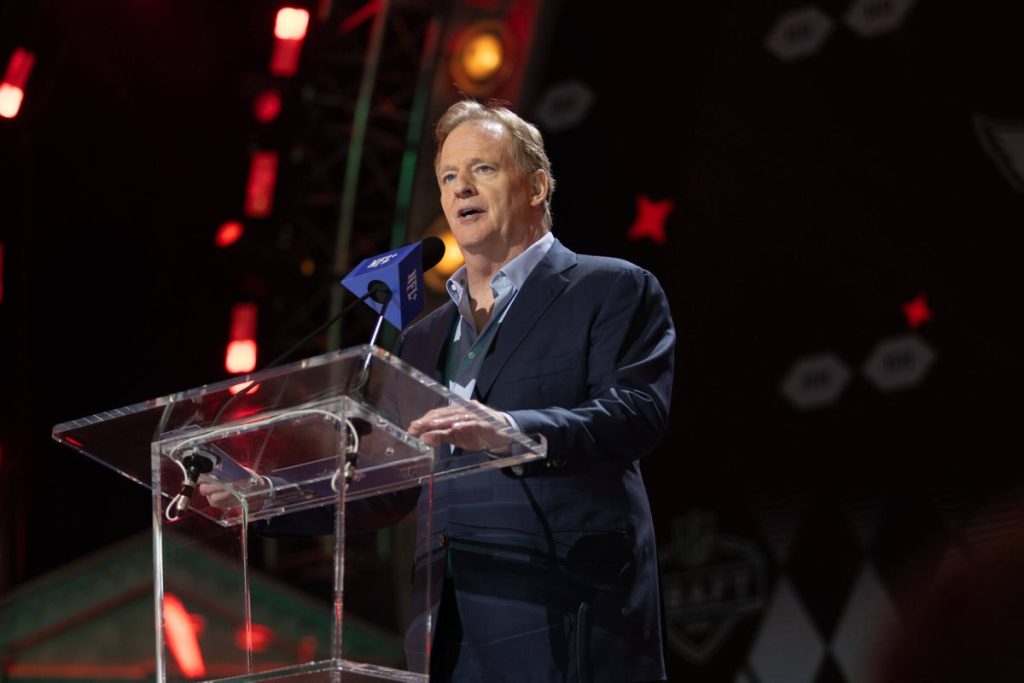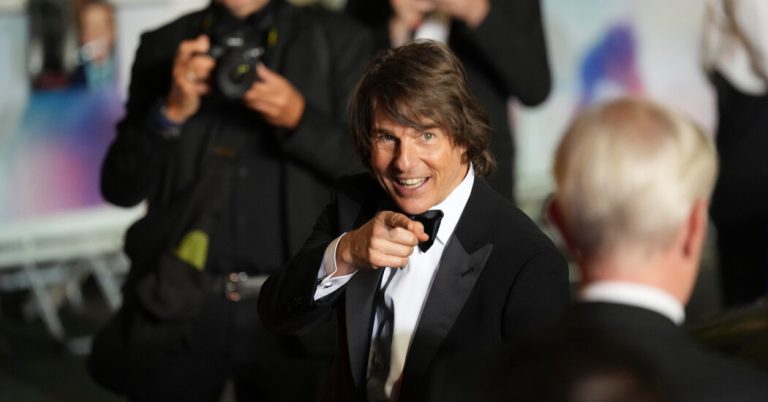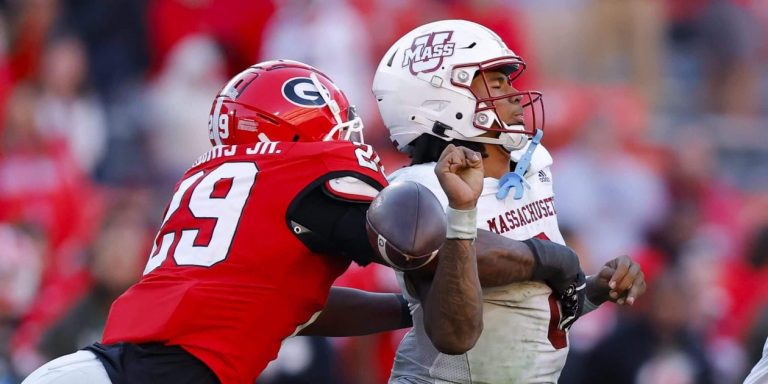There’s no soundproof formula for making a sports jingle that sticks. But composer Bob Christianson knows a few strategies.
The CBS March Madness intro. ESPN’s NHL theme. Christianson is behind them both. So when ESPN approached him in 2005 to craft a chime for the NFL Draft that would signal a new selection to viewers, Christianson was on the edge of another anthem.
He wanted to make the sound as “bell-like as possible.” It had to be in the treble, Christianson explained, and alert the audience without being too intrusive.
“It cuts through, but it doesn’t have to be loud and in your face. It’s almost subliminal,” Christianson said. “Which is all the reason why people say they like it and they’ve caught on to it. They’ve heard it, whether they know it or not.”
The chime he created is now a universal signal: And the pick is …
Once a year, for three days, the NFL Draft takes over TVs in living rooms and bars. The first pick, although often predictable, signals an exciting start for fans, teams and athletes. But as the 250-plus picks continue through Saturday, the draft fades into a background soundtrack.
In the early 2000s, ESPN experimented with different ways to cover the draft. The network incorporated live shots of players who weren’t in attendance at Radio City Music Hall in New York and cut into teams’ war rooms to show the decision-makers.
But one aspect they were stuck on was how to approach the draft’s later rounds, when the picks come more quickly, and the broadcast can’t cut to the podium for each one. That’s when Steve Ackels, an associate producer at the time, suggested they create an alert exclusively targeted to the TV audience.
“I always remember (the draft) being on, but it’s kind of background, you’re doing stuff around the house,” said Ackels, now ESPN’s vice president of production and producer of “Monday Night Football.” “I just thought … is there some sort of alert or chime when the commissioner or whoever was going to come out and make the pick … that may help the viewer pay more attention?”
The pitch landed on ESPN creative music director Kevin Wilson’s desk with two primary inspirations. First, it could mimic the news banner that flashed over live games and other programming at the 28th and 58th minute of every hour, signaled by the “SportsCenter” news alert sound. (Now that banner moves across the bottom of the screen 24/7.)
Second, the goal would be similar to that of the New York Stock Exchange bell, which signals the opening or closing of the day’s trading. Music had always been a part of storytelling around the draft, but it had never been used like this.
“I would say (music) is as impactful to a sports production as it is to a movie or any other television show or anything you’re watching,” Wilson said. “Music always helps set the tone and drive the identity of the program.”
The first variation of the chime debuted with pick No. 2 in 2004. In 2005, it was tweaked to match the NYSE bell, ringing as then-commissioner Paul Tagliabue announced Alex Smith as the No. 1 pick to San Francisco. But neither stuck.
The network wanted the chime to sound similar to the musical elements used in its other football programming, which included “Sunday Night Football” until it moved to NBC in 2006 and “NFL Primetime,” which aired late on Sunday afternoons before the night game. (ESPN still uses music from “Primetime” during player highlight packages on the draft broadcast.)
Using the inspiration, Christianson crafted 15 to 20 variations of chimes for ESPN to choose from — each differing in length, speed and octave.
“Rock shuffle” tunes resonate best with sports audiences, Christianson said. And for each sport, his brain translates the action into music differently. Football is “more in your face,” which means more drums. A football tune is a little slower than basketball, which is slower than hockey.
“You sort of have to go where the sport is and what the energy is they’re putting out,” said Christianson, who has also written music for “Sex and the City” and the Discovery Channel. “The music should reflect what’s happening in the sport.”
Originally, the thought was to use the chime only during later rounds. But Ed Placey, a former coordinating producer at ESPN, suggested starting it from the beginning to create a correlation.
“I had a minimal exposure in college to behavioral psychology and other forms of psychology, including Pavlov and his dogs,” said Placey, who retired from the network in 2023. “And it reminded me of that behavioral principle that when you connect that sound to that noise and see the result, you get conditioned to knowing that’s what it means.
“While you now hear (the chime) from the very first pick, and you probably don’t need it, you have everybody’s attention.”
The production team agreed: Create a habit with the draft chime from the beginning. However, it didn’t play out that way initially.
With the new chime set to debut during the 2006 NFL Draft, first-year commissioner Roger Goodell approached the podium with the Houston Texans holding the No. 1 pick. He announced Mario Williams as the selection, but the music was never cued up. In fact, the chime didn’t play until the eighth pick, a somewhat surprising selection by the Buffalo Bills of safety Donte Whitner.
No one is completely sure of the reason behind the delay. Placey theorized that there might have been hesitancy to try something new while most of the audience was already paying close attention to the first several picks, even though the production team had used an alert early in 2004 and 2005.
The new chime parachuted in at different points during the first rounds of the next two drafts until 2009, when it was first used on the No. 1 pick: Matthew Stafford to the Detroit Lions. And it stuck.
Now, it’s hard to imagine the draft without the chime. It’s recognizable, one of those tunes you hum for a week after you hear it. Ackels said he’s since toyed with pitching a version of “Monday Night Football” theme as a new chime, but the original has taken on a life of its own.
“Some things just become iconic,” Wilson said. “You can’t really control that.”
As the sound became a staple, ESPN brought it to broadcasts for the NBA (starting in 2015) and WNBA (2021) drafts, too. Now, it’s as synonymous with a draft pick as a hug or handshake with Goodell.
“When you hear that chime, to me, it symbolizes anticipation of something new that’s going to happen for a family, for a player, for a team, for a fan base, for an owner,” Ackels said. “That’s a brand new, fresh beginning.”
As viewers tune into the 2025 NFL Draft beginning Thursday, the chime will do what was always intended: Notify viewers to turn up the volume, pay attention and embrace the start of a new NFL journey.
“The fact that it’s become as important as it is to the draft picks just amazes me,” Christianson said.
He added with a laugh, “(It makes me feel) like I didn’t pick the wrong thing to do for a living.”
(Photo of Roger Goodell: John Smolek / Icon Sportswire via Getty Images)







